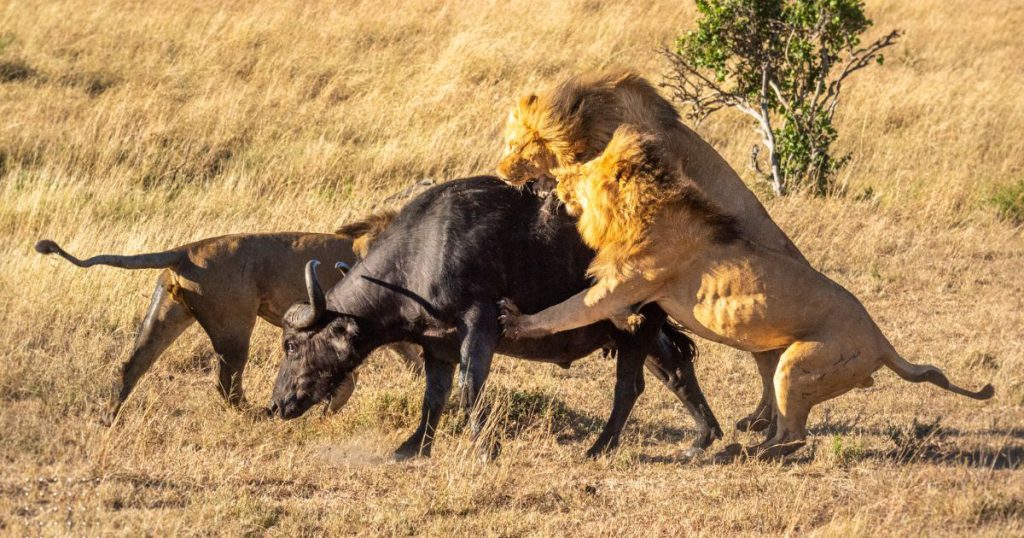
The Essential Secrets Aspiring Entrepreneur Must Know About Starting a Business
Dreaming of starting your own business? Read this article to get a realistic view of what it takes before diving in! Managing expectations is key!
Certified High-Performance coach, speaker, author, husband, adventurer, former commando-paratrooper, and tsunami survivor.
Are you scared sometimes? Yes, me too, and that’s ok. What’s not ok though, is to back off in front of your fears, play small, give up or hold back when you are afraid. We create our fears over time but the good news is that we can break them in an instant. Learn how to overcome your fears. It’s not a suggestion, it’s a must!
We all experience fear. And if someone says otherwise, he or she is lying (and probably afraid of saying the truth). I can say that we all have them because it is a survival instinct, not an option. Some people indeed act as if they are never afraid but it is just how it looks from the outside. From the inside, they do experience fears like everybody else, the difference is that they put in place a system to overcome them.
This article addresses one of the key topics featured in the no-bullshit guide to creating success and fulfillment in life and business, where you’ll uncover the 3-part formula to design and live a more rewarding life. It may sound too good to be true, but it’s a system that actually works. If you haven’t read it yet, I highly recommend that you do so now to gain a better understanding of what it takes to reach excellence. Additionally, you can read the 4 steps to reach excellence and learn a methodology you can apply to any subject to speed up your progress.

The amygdala is the part of your brain that processes threatening stimuli. It goes to work as soon as it recognizes the danger. It alerts your nervous system to trigger a fear response: production of stress hormones like cortisol and adrenaline, shallow breathing, increase of the blood pressure and heart rate. With all those physiological changes, you are now alert and ready to deal with the potential threat. What an amazing body we have!
As you can imagine, it is a really useful mechanism that helped our species survive. Our ancestors had to deal with life-threatening situations every single day! Wild animals, insects, weather, enemies,… The fear response was usually short-lived even though there was danger all around. It makes sense that such a physiological and psychological state is not sustainable for a long time. When the danger is apparent we experience fear, when the threat disappears we relax. It is a present-centered response.
Luckily, we no longer face the same threats in our modern-day living. We live in a very comfortable and convenient era with only rarely facing dangerous events.
The problem is that our brain cannot differentiate if the danger is perceived or real. We face a lot of events like exams, job interviews, dates, potential failure, potential success,…, that might create a fear response without being dangerous per se. We might even experience fear for just thinking about a specific event. Those thoughts also trigger a fear response and cause stress and anxiety.
Fear is necessary to be alert when we sense real danger or feel unsafe, but it can also tremendously limit us when the danger is perceived and constructed by the mind and that is why we need to learn to overcome them.
We create all the fears that are not directly a response to an immediate danger. The best proof is that if it was not, we would all have the same fears, but it’s not the case. The only 2 fears you were born with are the fear of loud noises and the fear of falling. Yes, the rest is all made up!
Growing up, you learned to overcome those fears and made place for new ones.
Some fears are taught by our parents (or inner circle), others are learned based on our past experiences (or other’s experiences). If we feel scared without actually facing a danger, we are simply anticipating what might happen in the future. But nobody can predict the future! So no matter how real the fear is for you, no matter how much evidence you’re gathering in your mind to justify its presence, it is still a construction of your mind.
There is no magic in overcoming your fears. “You can either try to forget everything and run or face everything and rise. The choice is yours.” Overcoming your fears is a conscious and intentional process that might be challenging at times. But if you are here, I am sure that you are done being a slave of your fears and ready to do what it takes to overcome them!
Scary huh?
Let me give you the formula to explain how fear works:
WHAT IF + NEGATIVE OUTCOME = FEAR
Negative outcome: They will laugh at me. They will think I am an imposter, a fraud. I am afraid that I am not enough, not lovable, not worth it, people will reject me and I will be alone.
In the past, if you were ostracised, you died. It was extremely unlikely to survive alone in the wild. So we now have mental programming that is telling us to fit in and fear rejection. Read more about that in Why we care so much?”.

The prey effect
Furthermore, having eyes fixing and watching you is like being a prey in front of a predator. The moment we are in the spotlight, we are vulnerable, seen and your amygdala is going to work to alert you of the potential danger.
If you dig deep enough, you can almost always go back to the fear of pain and death. And it makes sense because fear is a survival mechanism.
Now let’s turn this around and use the “what if” with a positive outcome:
What if I inspire the audience with my words?
What if they love me?
What if they remember my speech forever?
What if they applaud so loud?
How do you feel when you read those questions? Excited! It is the same physical sensation as fear, just labeled differently.
What if + negative outcome = fear
What if + positive outcome = excitement
So what are you actually afraid of?
Expect the best, prepare for the worst
I am not afraid of heights but the first time I was standing in the frame of the open door of a C-130 military plane flying 300m above the ground, ready to jump, I have to admit, I was very excited but also slightly uncomfortable. I was rehearsing the sequence:
Look for the red light to turn green, wait for the “go” of the dispatcher, make a big step forward with the good leg first (avoid hitting the door frame), wait for the parachute to open (hopefully it will..), undo the eventual twist (hopefully not too many..), check if everything is ok (hopefully no damage in the canopy, the lines and the rest of the material..), look around for potential collision (hopefully not being hit by anyone or get tangled..), figure out my drift direction (hopefully the wind is not too strong..), observe the landing zone (hopefully the pilot got it right..), prepare for landing (brace for impact..), hit the ground (without breaking my legs..).
Yes, a lot can go wrong in this single minute in the sky! But for every “what if”, we learned a response. For every scenario, we practice a drill, so the moment we have to make a good (life-saving) decision, we will. We minimized the fear by being ready.
Now that you understand that fear is a construction of the mind, you can recognize it as it is rather than as the truth. It is just one of the infinite possibilities, and you can choose to not focus on it. Furthermore, whatever you fear is not especially scaring me, and whatever I am afraid of is not especially making you nervous. Your fear is not a universal truth.
The moment you realize that you are empowering yourself to doubt your fears. Is it likely to happen? How do I know? Am I really in danger here or just focusing on the negative outcome rather than on the positive ones?
Do you remember a time when you were not afraid of that? You might have to dig up far in your past but I’m sure you can (except for the fear of loud noises and falling, obviously). What happened in your life that lead you to create a negative belief and a protection mechanism so that every time this situation arises, you experience fear to “stay safe”?
I was paragliding in Linzhou, China, I was quite new to the sport but I felt pretty confident. It was the first time I would be going for a cross-country flight (distance flying, using the thermals to soar high). Everything was going well, I was already 2h in the sky, flying above the mountain range following the birds, and enjoying the breathtaking view from above. I was in bliss and fearless.

It all goes well until it doesn’t.
Suddenly, three-quarters of my wing collapsed and the glider dived in front of me. I entered an uncontrolled spiral. The speed of the rotation was increasing quickly as well as the g-force. I felt heavy and my vision was getting blurry. I was spiraling down to the ground and losing altitude fast.
Luckily, I remembered what to do, I reacted and exited the spiral bringing my glider back above my head, reinflated and stable. When I looked around half in shock, I realized that I was barely 60m above the rocks… My whole body was shaking and I just wanted one thing: go back to the ground where I would be safe again. Despite the urge to land, I decided to stay in the sky and keep flying. I was scared and lost my confidence. But I knew that if I would quit now, I would be scared and create a new belief of fear around paragliding.
I did some breathing exercises in the sky and remembered that nothing changed compared to 10 minutes before when I was flying in bliss, confident, and not afraid. An incident will not make me scared of flying. A glider collapse is a possibility but the probability that it can lead to an accident is not so high if you fly actively (preventing it) and master the recovery. I decided that it was an opportunity to learn more rather than an opportunity to be scared. I kept flying intensively for the following 2 years and I had many more collapses. But I was ready to react, I was prepared for the worst but I expected the best. I was aware, but not scared.
The choice is yours
I could have created a totally different belief that day and maybe I would never have flown again.
Think about driving a car. Are you scared to have an accident? It happens. But what is the likelihood to happen? How many hours have you spent on the road vs how many accidents did you ever have? It’s important to be aware of the risks but it is not necessary to be scared.
Whatever fear you have, you created it because of something. You, one day, created a connection between a situation and a negative outcome.
Do you remember a time when you weren’t scared? What happened that lead you to create this belief? It usually makes sense, but is it empowering you or is it holding you back?
What will it be like if things never change? Is there any evidence that contradicts your negative thought? If you would not have this fear anymore, what would you do?
Freedom is something we are all after. You can free yourself from your fears as much as you chained yourself to them. Take a moment to visualize this fearless reality. It’s a game of the mind, and you can win.
The famous magician Houdini claimed that he could break out of any jail cell in the world. His only requirement was wearing his casual outfit. His secret: he was that he was a very talented locksmith and in his belt was hidden a small metallic pin.
He went from one prison to another proofing that he could escape from any cell. One day he got invited to a high-security prison and was ready for the challenge. The media were covering the event and lots of people were present to witness the magic. The guards put him in a cell and left. Houdini took his hidden tool and started working the lock. 30 minutes… 1 hour… still not open. He was getting frustrated. 2 hours later, still, nothing happened. He was now very angry and almost despaired. Hours had passed and he was still inside the cell. Exhausted, he leaned against the door, and… it opened!
With all the excitement and the people, the guard forgot to lock the cell. Houdini couldn’t escape but the cell had never been locked. The only place he was locked was in his mind. He was locked because he thought he was.
“If you think you can or if you think you can’t, either way, you’re right!”
– H. Ford
Don’t underestimate the power of your mind.
The brain actually has to re-experience a fear to eliminate it. If we create it, we can delete it. We actually have to test out if it is as bad as expected. It does require courage to do so but you don’t have to go all-in immediately. It might take time to change your belief and it’s better if you go step by step and minimize the risks, build up confidence and create a solid base for permanent change.
For example, if you are afraid of public speaking, you can start talking in a small group within an organization that supports people to become better speakers instead of booking a spot on change for the next major event in your country. If you are afraid of dogs, you can start by looking at a picture of a dog or observing a dog on a leash from further away.
You get the concept. Deconstruct your fear in a series of steps that will slowly bring you to face it while keeping the risk at a minimum. The key here is to demonstrate courage and take small actions. “Courage doesn’t mean the absence of fear, being courageous is conquering your fears.“

The framework I gave you is a great tool to overcome your fears. But sometimes you don’t have time for deep thinking. When your amygdala picks up a potential danger and triggers a fear response, you have to deal with it in the moment. For example, when my glider collapsed in the sky, it was a real danger to my life but after regaining control of the wing, everything was back to normal and there was no immediate danger anymore but I was still scared. It was not a real fear but a perceived fear and I had to deal with it, fast. Fear is an immediate reaction and you need to be able to give it an immediate response.
How do you breathe when you are afraid? You breathe fast and from the top of your lungs or you even hold your breath. Pay attention to the breathing of the actors the next time you watch a movie, you’ll notice it!
How do you breathe when you are chilling on a beach in the tropics siping piñacoladas? Long and deep breaths.
The way we breathe is immediately linked to our fear/stress level, but it goes in both directions. Fear creates fast shallow breath and deep breathing creates relaxation. Let me prove it right now! Take a deep breath, in through your nose and out through your mouth with a nice ahh.
How does that feel? Great, isn’t it?
Conscious breathing is a powerful tool to manage your stress and fear levels and boost your cognitive function at the same time. The Navy Seals created a method called the “Box Breathing” that they teach to their special forces operatives to manage stress under pressure in combat. If they manage to reduce calm themselves down when bullets are whistling around, I’m pretty sure you can do it too before your next job interview.
Whenever you feel scared, stressed, etc; slow down, and take a few deep breaths.
When you are scared about something that doesn’t threaten your life immediately (=perceived fear), you are stuck in the rehearsal of the future. The best you could do is to reconnect to the present moment and tell your mind that right here, right now, there is no danger.
Next to breathing, a powerful method to center yourself in the present moment is to use your senses. Listen to what you hear, focus on your smell, touch and feel the texture, look and pay attention to details, and notice the taste if you are eating or drinking something.
I prefer to connect to the touch to bring me back to the present. Whenever I feel too much in my head, I take something in my hand and focus on how it feels.
Yes! We all experience fear and that’s a good thing. It is a survival mechanism that helps us to stay safe. But like everything, there is also a dark side to it: when it is holding us back and disempowering us.
Luckily you can train yourself to respond better and overcome your fears. If you experience fear induced by a sudden event, you can calm yourself down with deep breathing and reconnect to the present moment with your senses.
If you experience a recurring fear about something, you can start by identifying what really scares you, recognize it as a fear and not as a truth, understand where it’s coming from, visualize a reality without being a slave to that fear and then demonstrate courage and take a single simple action to face and re-write your mental script.
At least that’s what I do. And it works perfectly!
“Come to the edge,” he said.
“We can’t, we’re afraid!” they responded.
“Come to the edge,” he said.
“We can’t, We will fall!” they responded.
“Come to the edge,” he said.
And so they came.
And he pushed them.
And they flew.”
― Guillaume Apollinaire
Like this content? Be the first to get it delivered directly to your inbox every month (along with a lot of other great content). Yes, please send me the newsletter, exclusive information, and updates on self-mastery.

Dreaming of starting your own business? Read this article to get a realistic view of what it takes before diving in! Managing expectations is key!

Life is not a fairytale; the reality is that it can be unfair and brutal. Natural disasters, wars, accidents, inequalities, I mean, it’s tough out there! And in our quest to find happiness, we must learn to let go of what we can’t control. The problem is that we believe that things should be the way we want, and if it doesn’t, we think something is wrong, so…

A proven framework to reach your next level. Let me warn you; it is probably not the “easy, no effort, immediate effect” answer you were looking for, but something that actually works. If you’re still seeking the shortcut, keep looking; good luck and goodbye.

What would it be if I asked you to describe success in one word? Most of us would associate success with external achievements and material gains. In this blog, I offer a fresh perspective on what it means to be successful.
Are you scared sometimes? Yes, me too, and that’s ok. What’s not ok though, is to back off in front of your fears, play small, give up or hold back when you are afraid. We create our fears over time but the good news is that we can break them in an instant. Learn how to overcome your fears. It’s not a suggestion, it’s a must!
We all experience fear. And if someone says otherwise, he or she is lying (and probably afraid of saying the truth). I can say that we all have them because it is a survival instinct, not an option. Some people indeed act as if they are never afraid but it is just how it looks from the outside. From the inside, they do experience fears like everybody else, the difference is that they put in place a system to overcome them.
The amygdala is the part of your brain that processes threatening stimuli. It goes to work as soon as it recognizes the danger. It alerts your nervous system to trigger a fear response: production of stress hormones like cortisol and adrenaline, shallow breathing, increase of the blood pressure and heart rate. With all those physiological changes, you are now alert and ready to deal with the potential threat. What an amazing body we have!
As you can imagine, it is a really useful mechanism that helped our species survive. Our ancestors had to deal with life-threatening situations every single day! Wild animals, insects, weather, enemies,… The fear response was usually short-lived even though there was danger all around. It makes sense that such a physiological and psychological state is not sustainable for a long time. When the danger is apparent we experience fear, when the threat disappears we relax. It is a present-centered response.
Luckily, we no longer face the same threats in our modern-day living. We live in a very comfortable and convenient era with only rarely facing dangerous events.
The problem is that our brain cannot differentiate if the danger is perceived or real. We face a lot of events like exams, job interviews, dates, potential failure, potential success,…, that might create a fear response without being dangerous per se. We might even experience fear for just thinking about a specific event. Those thoughts also trigger a fear response and cause stress and anxiety.

Fear is necessary to be alert when we sense real danger or feel unsafe, but it can also tremendously limit us when the danger is perceived and constructed by the mind and that is why we need to learn to overcome them.
We create all the fears that are not directly a response to an immediate danger. The best proof is that if it was not, we would all have the same fears, but it’s not the case. The only 2 fears you were born with are the fear of loud noises and the fear of falling. Yes, the rest is all made up!
Growing up, you learned to overcome those fears and made place for new ones.
Some fears are taught by our parents (or inner circle), others are learned based on our past experiences (or other’s experiences). If we feel scared without actually facing a danger, we are simply anticipating what might happen in the future. But nobody can predict the future! So no matter how real the fear is for you, no matter how much evidence you’re gathering in your mind to justify its presence, it is still a construction of your mind.
There is no magic in overcoming your fears. “You can either try to forget everything and run or face everything and rise. The choice is yours.” Overcoming your fears is a conscious and intentional process that might be challenging at times. But if you are here, I am sure that you are done being a slave of your fears and ready to do what it takes to overcome them!
Scary huh?
Let me give you the formula to explain how fear works:
WHAT IF + NEGATIVE OUTCOME = FEAR
What if I forgot my speech?
Or what if people don’t agree with what I say? Who am I to be on a stage?
What if I make a fool of myself?
Negative outcome: They will laugh at me. They will think I am an imposter, a fraud. I am afraid that I am not enough, not lovable, not worth it, people will reject me and I will be alone.
In the past, if you were ostracised, you died. It was extremely unlikely to survive alone in the wild. So we now have mental programming that is telling us to fit in and fear rejection. Read more about that in “Why we care so much?”.

Furthermore, having eyes fixing and watching you is like being a prey in front of a predator. The moment we are in the spotlight, we are vulnerable, seen and your amygdala is going to work to alert you of the potential danger.
If you dig deep enough, you can almost always go back to the fear of pain and death. And it makes sense because fear is a survival mechanism.
Now let’s turn this around and use the “what if” with a positive outcome:
What if I inspire the audience with my words?
What if they love me?
What if they remember my speech forever?
What if they applaud so loud?
How do you feel when you read those questions? Excited! It is the same physical sensation as fear, just labeled differently.
What if + negative outcome = fear
What if + positive outcome = excitement
So what are you actually afraid of?
I am not afraid of heights but the first time I was standing in the frame of the open door of a C-130 military plane flying 300m above the ground, ready to jump, I have to admit, I was very excited but also slightly uncomfortable. I was rehearsing the sequence:
Look for the red light to turn green, wait for the “go” of the dispatcher, make a big step forward with the good leg first (avoid hitting the door frame), wait for the parachute to open (hopefully it will..), undo the eventual twist (hopefully not too many..), check if everything is ok (hopefully no damage in the canopy, the lines and the rest of the material..), look around for potential collision (hopefully not being hit by anyone or get tangled..), figure out my drift direction (hopefully the wind is not too strong..), observe the landing zone (hopefully the pilot got it right..), prepare for landing (brace for impact..), hit the ground (without breaking my legs..).
Yes, a lot can go wrong in this single minute in the sky! But for every “what if”, we learned a response. For every scenario, we practice a drill, so the moment we have to make a good (life-saving) decision, we will. We minimized the fear by being ready.
Now that you understand that fear is a construction of the mind, you can recognize it as it is rather than as the truth. It is just one of the infinite possibilities, and you can choose to not focus on it. Furthermore, whatever you fear is not especially scaring me, and whatever I am afraid of is not especially making you nervous. Your fear is not a universal truth.
The moment you realize that you are empowering yourself to doubt your fears. Is it likely to happen? How do I know? Am I really in danger here or just focusing on the negative outcome rather than on the positive ones?
Do you remember a time when you were not afraid of that? You might have to dig up far in your past but I’m sure you can (except for the fear of loud noises and falling, obviously). What happened in your life that lead you to create a negative belief and a protection mechanism so that every time this situation arises, you experience fear to “stay safe”?
I was paragliding in Linzhou, China, I was quite new to the sport but I felt pretty confident. It was the first time I would be going for a cross-country flight (distance flying, using the thermals to soar high). Everything was going well, I was already 2h in the sky, flying above the mountain range following the birds, and enjoying the breathtaking view from above. I was in bliss and fearless.

Suddenly, three-quarters of my wing collapsed and the glider dived in front of me. I entered an uncontrolled spiral. The speed of the rotation was increasing quickly as well as the g-force. I felt heavy and my vision was getting blurry. I was spiraling down to the ground and losing altitude fast.
Luckily, I remembered what to do, I reacted and exited the spiral bringing my glider back above my head, reinflated and stable. When I looked around half in shock, I realized that I was barely 60m above the rocks… My whole body was shaking and I just wanted one thing: go back to the ground where I would be safe again. Despite the urge to land, I decided to stay in the sky and keep flying. I was scared and lost my confidence. But I knew that if I would quit now, I would be scared and create a new belief of fear around paragliding.
I did some breathing exercises in the sky and remembered that nothing changed compared to 10 minutes before when I was flying in bliss, confident, and not afraid. An incident will not make me scared of flying. A glider collapse is a possibility but the probability that it can lead to an accident is not so high if you fly actively (preventing it) and master the recovery. I decided that it was an opportunity to learn more rather than an opportunity to be scared. I kept flying intensively for the following 2 years and I had many more collapses. But I was ready to react, I was prepared for the worst but I expected the best. I was aware, but not scared.
I could have created a totally different belief that day and maybe I would never have flown again.
Think about driving a car. Are you scared to have an accident? It happens. But what is the likelihood to happen? How many hours have you spent on the road vs how many accidents did you ever have? It’s important to be aware of the risks but it is not necessary to be scared.
Whatever fear you have, you created it because of something. You, one day, created a connection between a situation and a negative outcome.
Do you remember a time when you weren’t scared? What happened that lead you to create this belief? It usually makes sense, but is it empowering you or is it holding you back?
What will it be like if things never change? Is there any evidence that contradicts your negative thought? If you would not have this fear anymore, what would you do?
Freedom is something we are all after. You can free yourself from your fears as much as you chained yourself to them. Take a moment to visualize this fearless reality. It’s a game of the mind, and you can win.
The famous magician Houdini claimed that he could break out of any jail cell in the world. His only requirement was wearing his casual outfit. His secret: he was that he was a very talented locksmith and in his belt was hidden a small metallic pin.
He went from one prison to another proofing that he could escape from any cell. One day he got invited to a high-security prison and was ready for the challenge. The media were covering the event and lots of people were present to witness the magic. The guards put him in a cell and left. Houdini took his hidden tool and started working the lock. 30 minutes… 1 hour… still not open. He was getting frustrated. 2 hours later, still, nothing happened. He was now very angry and almost despaired. Hours had passed and he was still inside the cell. Exhausted, he leaned against the door, and… it opened!
With all the excitement and the people, the guard forgot to lock the cell. Houdini couldn’t escape but the cell had never been locked. The only place he was locked was in his mind. He was locked because he thought he was.
“If you think you can or if you think you can’t, either way, you’re right!”
– H. Ford
Don’t underestimate the power of your mind.
The brain actually has to re-experience a fear to eliminate it. If we create it, we can delete it. We actually have to test out if it is as bad as expected. It does require courage to do so but you don’t have to go all-in immediately. It might take time to change your belief and it’s better if you go step by step and minimize the risks, build up confidence and create a solid base for permanent change.
For example, if you are afraid of public speaking, you can start talking in a small group within an organization that supports people to become better speakers instead of booking a spot on change for the next major event in your country. If you are afraid of dogs, you can start by looking at a picture of a dog or observing a dog on a leash from further away.
You get the concept. Deconstruct your fear in a series of steps that will slowly bring you to face it while keeping the risk at a minimum. The key here is to demonstrate courage and take small actions. “Courage doesn’t mean the absence of fear, being courageous is conquering your fears.“
The framework I gave you is a great tool to overcome your fears. But sometimes you don’t have time for deep thinking. When your amygdala picks up a potential danger and triggers a fear response, you have to deal with it in the moment. For example, when my glider collapsed in the sky, it was a real danger to my life but after regaining control of the wing, everything was back to normal and there was no immediate danger anymore but I was still scared. It was not a real fear but a perceived fear and I had to deal with it, fast. Fear is an immediate reaction and you need to be able to give it an immediate response.
How do you breathe when you are afraid? You breathe fast and from the top of your lungs or you even hold your breath. Pay attention to the breathing of the actors the next time you watch a movie, you’ll notice it!
How do you breathe when you are chilling on a beach in the tropics siping piñacoladas Long and deep breaths.
The way we breathe is immediately linked to our fear/stress level, but it goes in both directions. Fear creates fast shallow breath and deep breathing creates relaxation. Let me prove it right now! Take a deep breath, in through your nose and out through your mouth with a nice ahh.
How does that feel? Great, isn’t it?
Conscious breathing is a powerful tool to manage your stress and fear levels and boost your cognitive function at the same time. The Navy Seals created a method called the “Box Breathing” that they teach to their special forces operatives to manage stress under pressure in combat. If they manage to reduce calm themselves down when bullets are whistling around, I’m pretty sure you can do it too before your next job interview.
Whenever you feel scared, stressed, etc; slow down, and take a few deep breaths.
When you are scared about something that doesn’t threaten your life immediately (=perceived fear), you are stuck in the rehearsal of the future. The best you could do is to reconnect to the present moment and tell your mind that right here, right now, there is no danger.
Next to breathing, a powerful method to center yourself in the present moment is to use your senses. Listen to what you hear, focus on your smell, touch and feel the texture, look and pay attention to details, and notice the taste if you are eating or drinking something.
I prefer to connect to the touch to bring me back to the present. Whenever I feel too much in my head, I take something in my hand and focus on how it feels.
Yes! We all experience fear and that’s a good thing. It is a survival mechanism that helps us to stay safe. But like everything, there is also a dark side to it: when it is holding us back and disempowering us.
Luckily you can train yourself to respond better and overcome your fears. If you experience fear induced by a sudden event, you can calm yourself down with deep breathing and reconnect to the present moment with your senses.
If you experience a recurring fear about something, you can start by identifying what really scares you, recognize it as a fear and not as a truth, understand where it’s coming from, visualize a reality without being a slave to that fear and then demonstrate courage and take a single simple action to face and re-write your mental script.
At least that’s what I do. And it works perfectly!
“Come to the edge,” he said.
“We can’t, we’re afraid!” they responded.
“Come to the edge,” he said.
“We can’t, We will fall!” they responded.
“Come to the edge,” he said.
And so they came.
And he pushed them.
And they flew.”
― Guillaume Apollinaire
